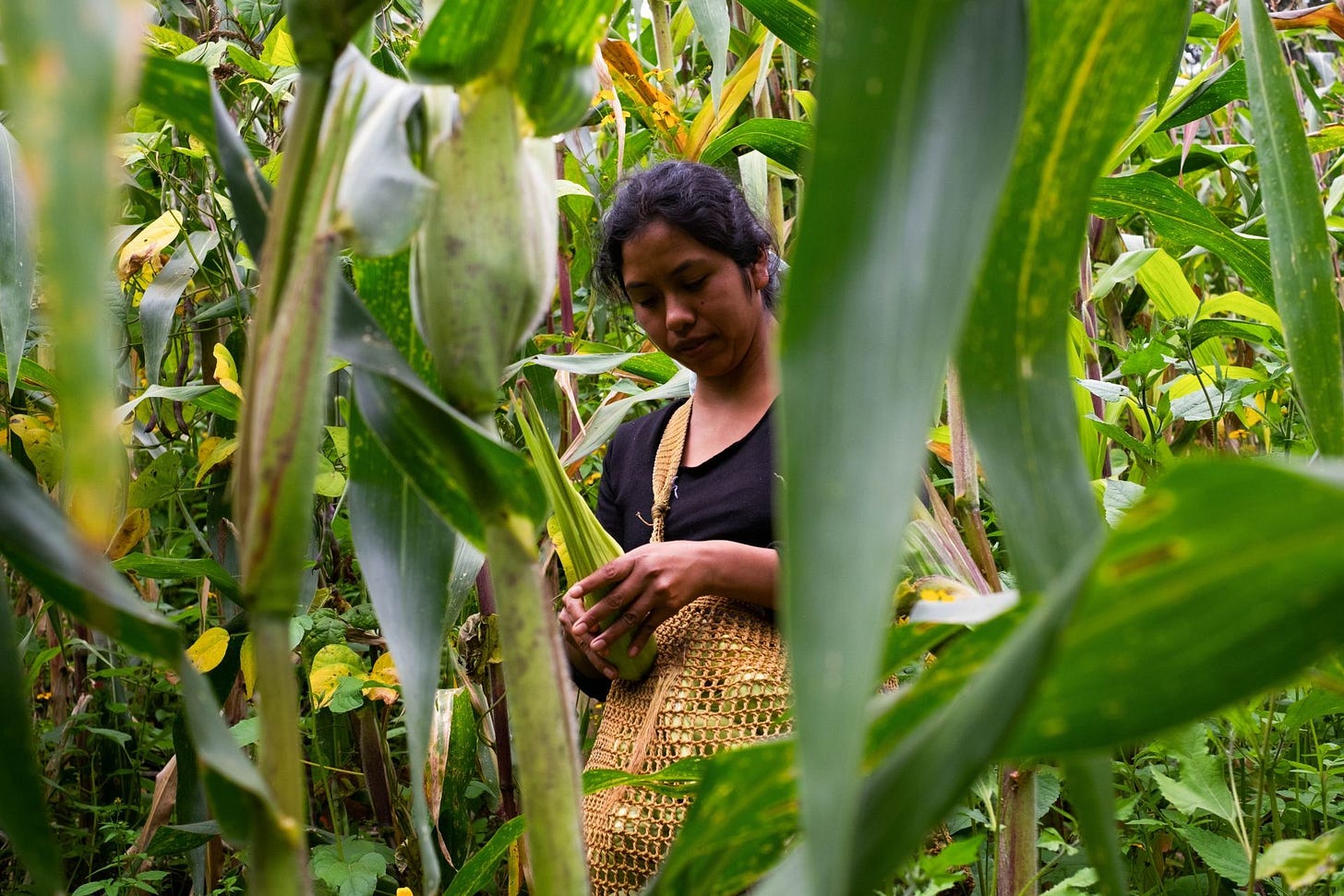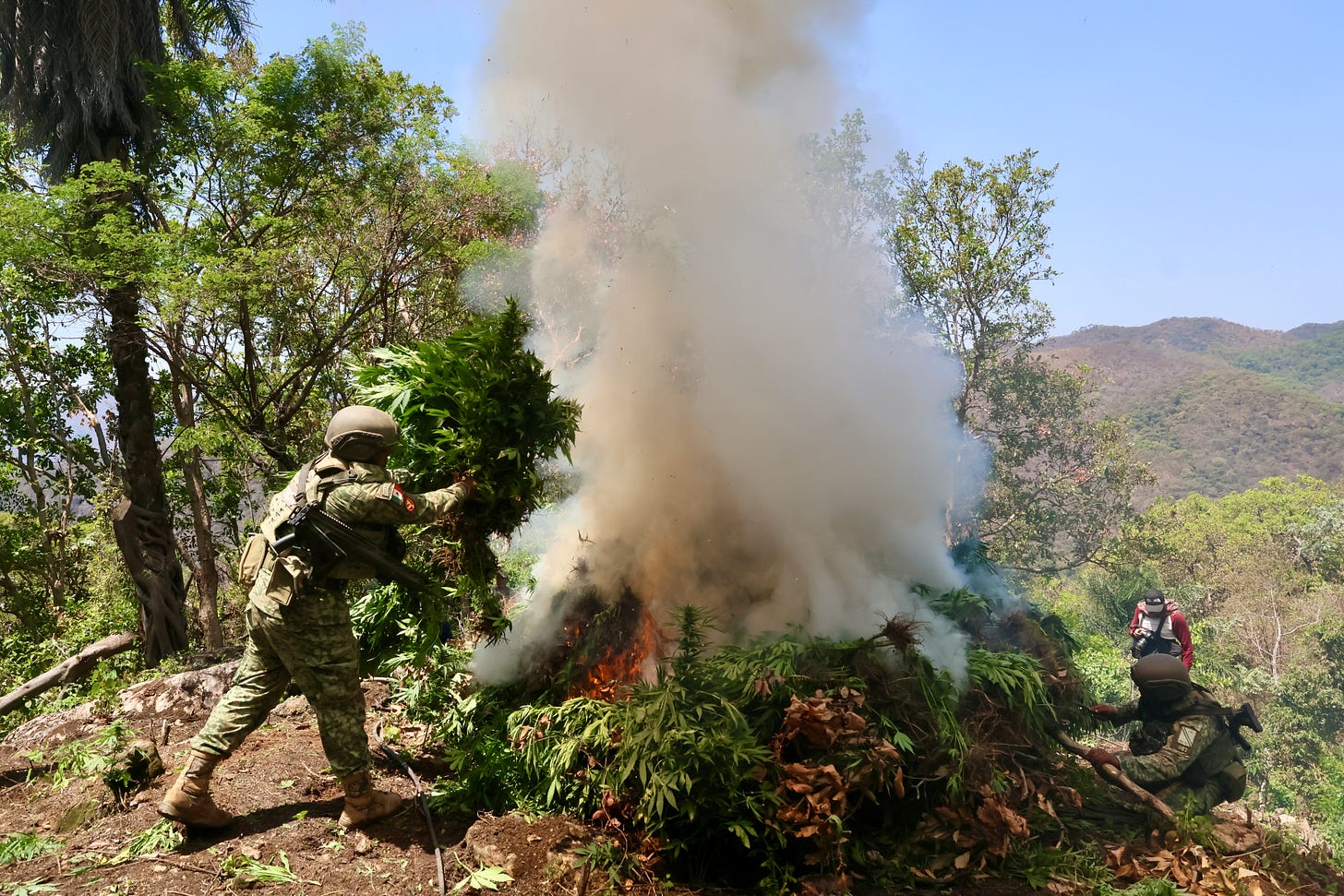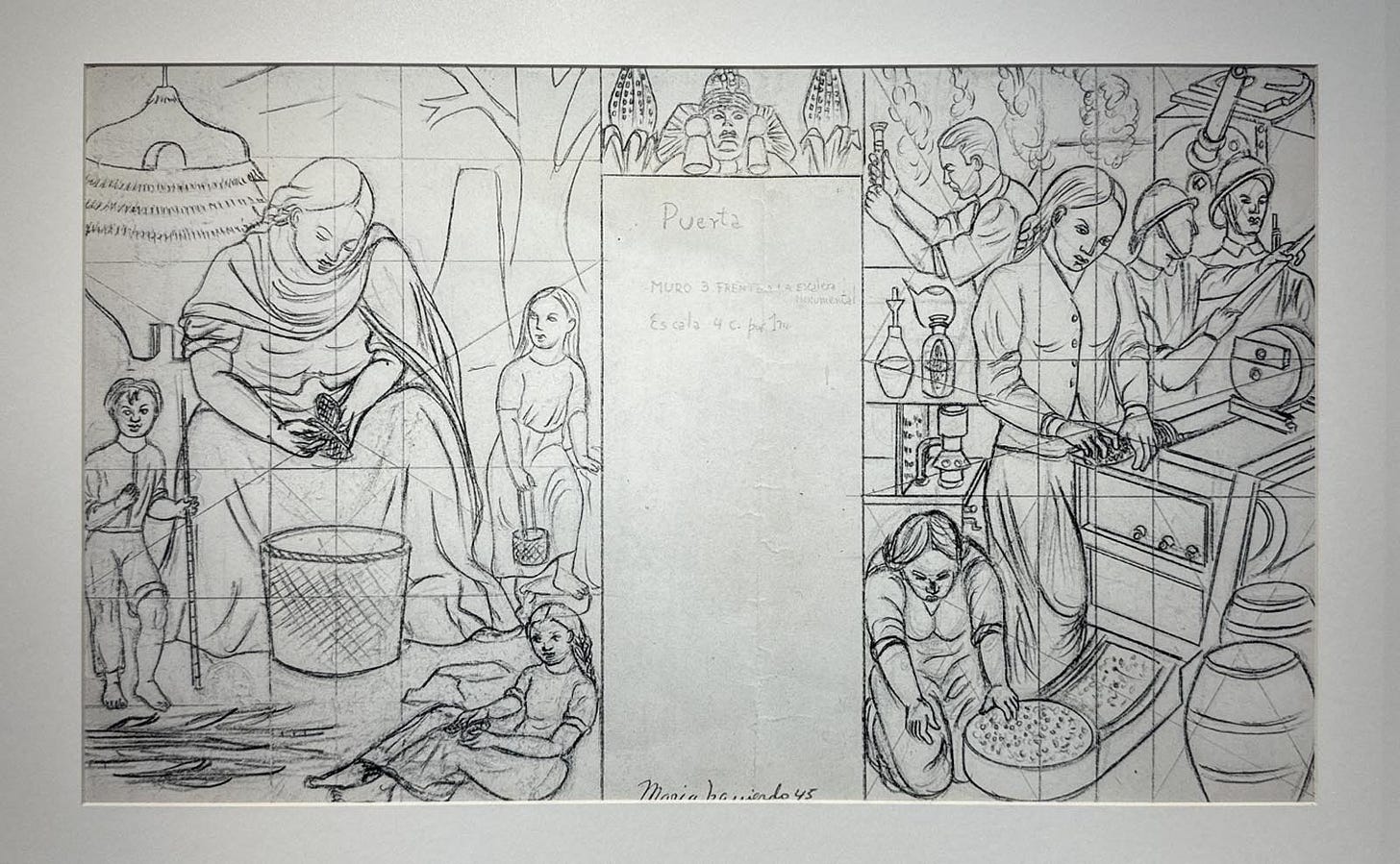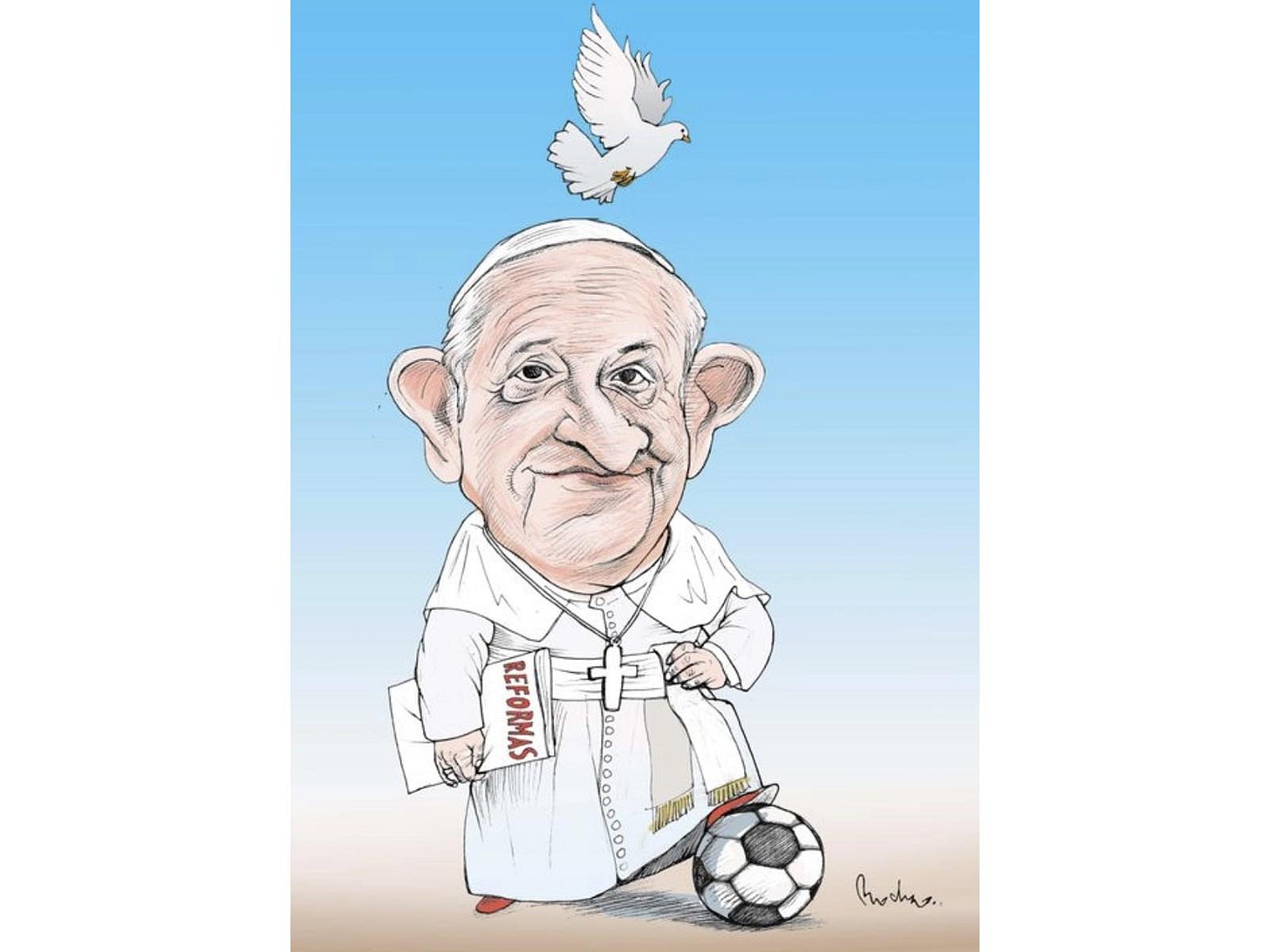25 Apr 25 | The Challenge of Rural Self-sufficiency
Also: Miguel Covarrubias, a Mexican who broke the mold. Where are they? — the cry of artists and relatives of the disappeared. Bernie Sanders: fighting the oligarchy. EZLN: art and rebellion.
Lea La Jornada Internacional en español aquí.
The Crisis in Mexican Agricuture
President Claudia Sheinbaum's administration has set deadlines for achieving food and energy self-sufficiency in Mexico, while creating the industrial strategy "Plan Mexico" to confront Trump's tariffs, reduce dependency, and develop the country's industrial economy. But in rural areas, persistent drought, the effects of free trade agreements, and organized crime are challenges that still have to be overcome.
In response to the news that Mexico will suffer the worst decline in grain production in 25 years, Sheinbaum says her agricultural policies will help to diversify the production of staple crops such as corn, beans, and wheat. "We are working to increase corn production by almost 5 million tons and bean production by 300,000 tons, which is the equivalent of what we import," she says.
But that won't be easy. This month, La Jornada published a series on "the agricultural crisis ," in which correspondents from across the country illustrated some of the key problems in rural areas. For example, this year in Chihuahua, drought and low crop prices have forced farmers to reduce the area of rainfed land they dedicate to bean production from 100,000 hectares to less than 20,000.
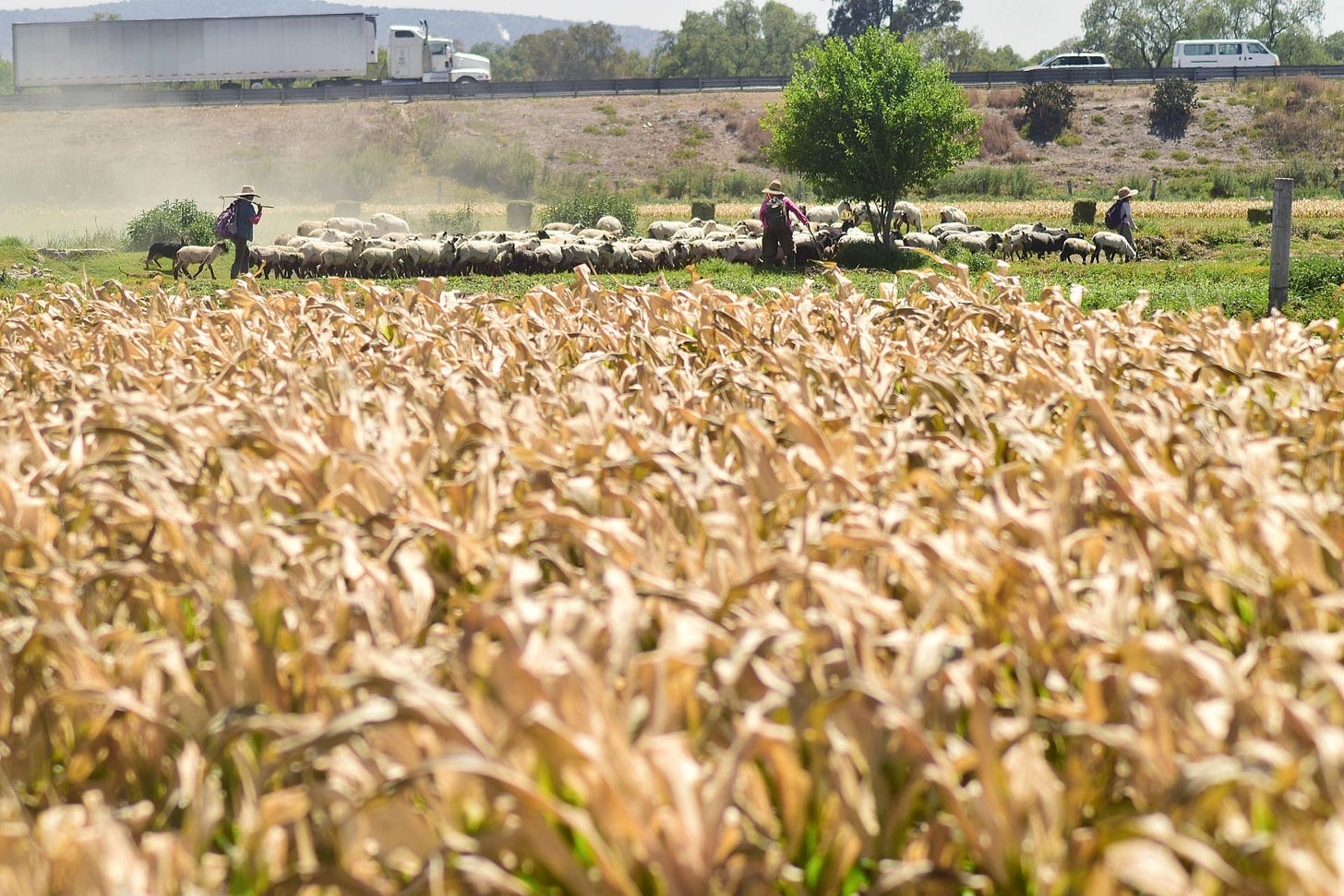
On the outskirts of Mexico City, farmers in the town of Mixquic face losses due to pests, heat, and water shortages, as well as insufficient agricultural support programs. Producers from the state of Michoacán say that agriculture there has been in crisis for more than two decades due to changes in land use, water shortages, the high cost of inputs, and the rental of land to foreign companies for monoculture. Corn, squash, potato and bean crops are now only grown for local consumption.
The sum of these factors has led to a decrease in crops and some farmers even choose to avoid large losses by planting only one crop instead of multiple crops as they had done previously. While last year growers obtained up to 18 tons for each crop they plant, many expect to obtain just seven tons in this year's harvest.
Further south, in Guerrero, community leaders report that thousands of farmers in the seven regions of the state have stopped working their land due to low profitability, lack of financial resources, pressure from criminal groups, and the effects of droughts and hurricanes. But in the poorest areas of the state, where people eat what they grow, government social programs have encouraged the planting of corn and mangoes instead of marijuana, with successful results.
But not everything is like this. The supplement La Jornada del Campo includes comprehensive coverage of viable alternatives, with examples of how farmers are using pastures and native grasslands in various parts of Mexico, from women ranchers in Chihuahua and Oaxaca, to the social and human capital of the goat herds of Jalisco and Michoacán.
The Quote
I think of the people of Gaza, and its Christian community in particular, where the terrible conflict continues to cause death and destruction and to create a dramatic and deplorable humanitarian situation. I appeal to the warring parties: call a ceasefire, release the hostages and come to the aid of a starving people that aspires to a future of peace!
-The final Easter message of Pope Francis
In case you missed it

◻️ El Chamaco Miguel Covarrubias, a Mexican artist who broke the mold and crossed boundaries between disciplines: from art to anthropology, from theater to editorial design, from illustration to archaeology. A new exhibition, Miguel Covarrubias: A View Without Borders, highlights the artist's life as a cartoonist, illustrator, draftsman, and painter. It also examines his work as a cartographer, set designer, collector, a public official who promoted modern dance in Mexico, and an author who made valuable contributions to anthropological, ethnographic, and museographic studies.
◻️ Where are they? Artists and family members carried banners and posters, and painted portraits of the faces of the disappeared to demand justice and insist there be "not one more disappeared person." President Claudia Sheinbaum has recognized the work of these families and is mobilizing government agencies, security forces, and Congress to address the tragedy of the more than 100,000 missing people in Mexico.
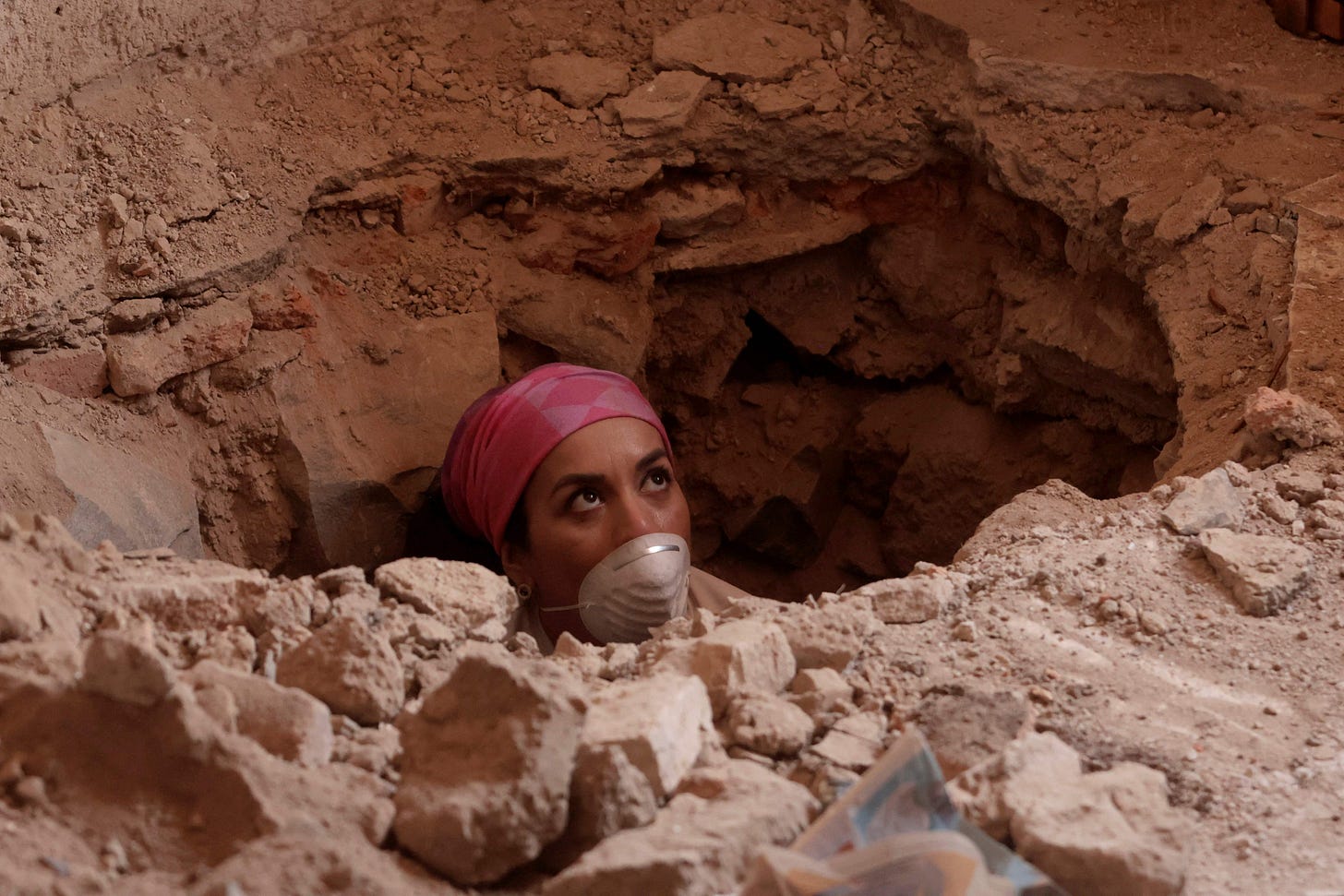
◻️ Migrants, between suffocation and relief. With the United States promoting measures to sow fear as part of its efforts to expel migrants– including advertising campaigns on Mexican television that threaten serious consequences for any potential migrant who dares to cross the border– Mexico continues to look for ways to offer refuge and support. But some of the civil society organizations that provide basic support to migrants crossing Mexico to reach the United States now face a dramatic reduction in funding due to Trump's cuts to international assistance programs, which affects their ability to address this crisis deepened by the U.S. government itself.
◻️ Large-scale concerts hide widespread labor exploitation. Beyond the view of the large crowds, in stadiums and on the stages of a thriving industry, hides widespread labor exploitation, report Jared Laureles and Jessica Xantomila in a series of articles in La Jornada. Working on big shows isn't all it's cracked up to be, say concert workers, who aren't supposed to watch the shows, go to the bathroom, or even use cell phones.
◻️ Bernie Sanders: Fight the Oligarchy. “The struggle before us will not be easy. But, for the sake of our kids and future generations, it’s a struggle we cannot run away from. We must take on Trumpism — and defeat it. We must create a government that works for all, and not just the few,” he wrote in La Jornada. ▶️ VIDEO
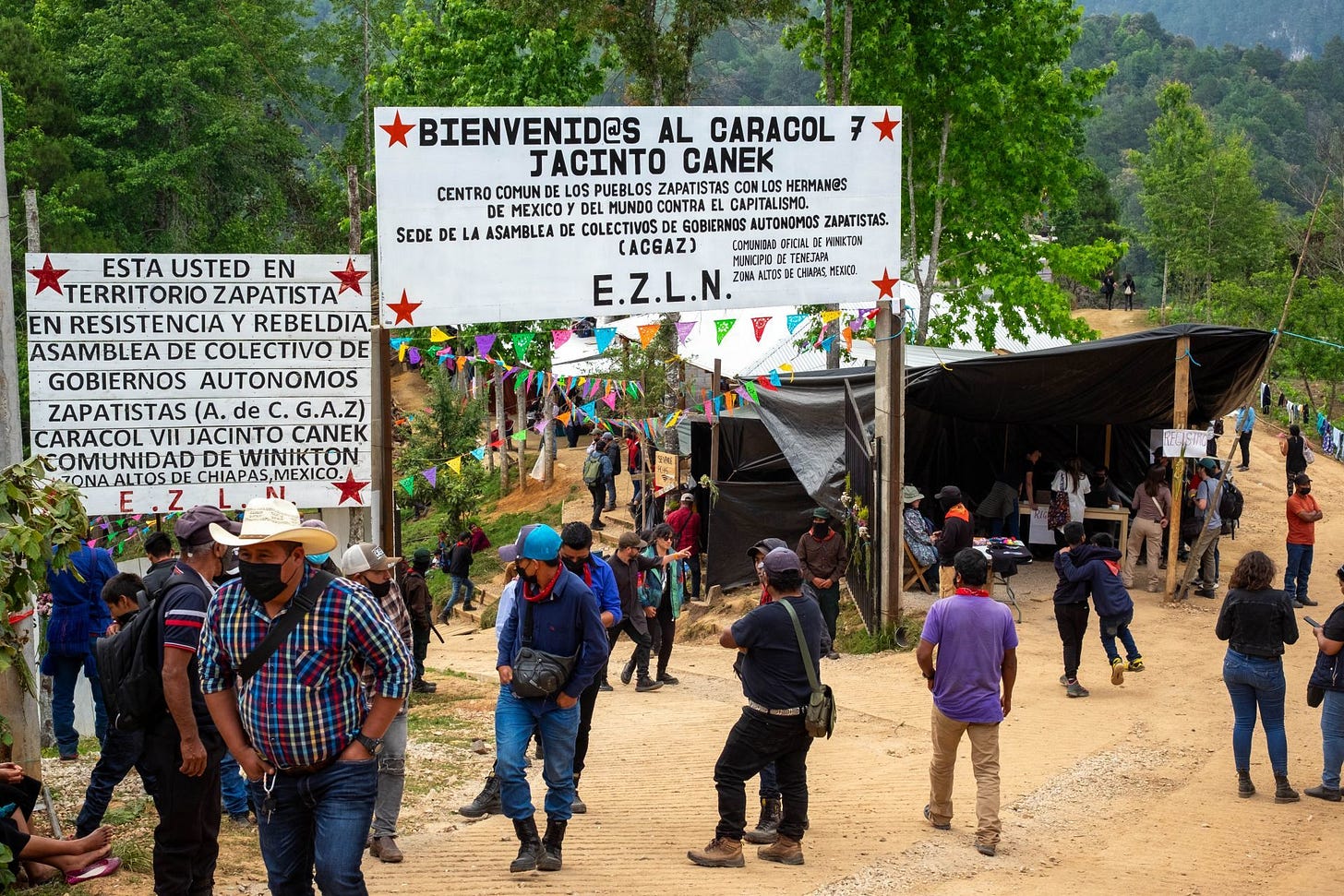
◻️ EZLN: Art and Rebellion. At a gathering in Chiapas convened by the Zapatistas, some 480 groups and individuals dedicated to artistic creation expressed the desire for a new way of life, not a capitalist system, reports Magdalena Gómez.
◻️ Farewell to Mario Vargas Llosa. Elena Poniatowska writes about Vargas Llosa, the last exponent of the Latin American boom.
◻️ María Izquierdo, dismissed as a muralist by Siqueiros, Orozco, and Rivera, is vindicated in a new exhibition.



